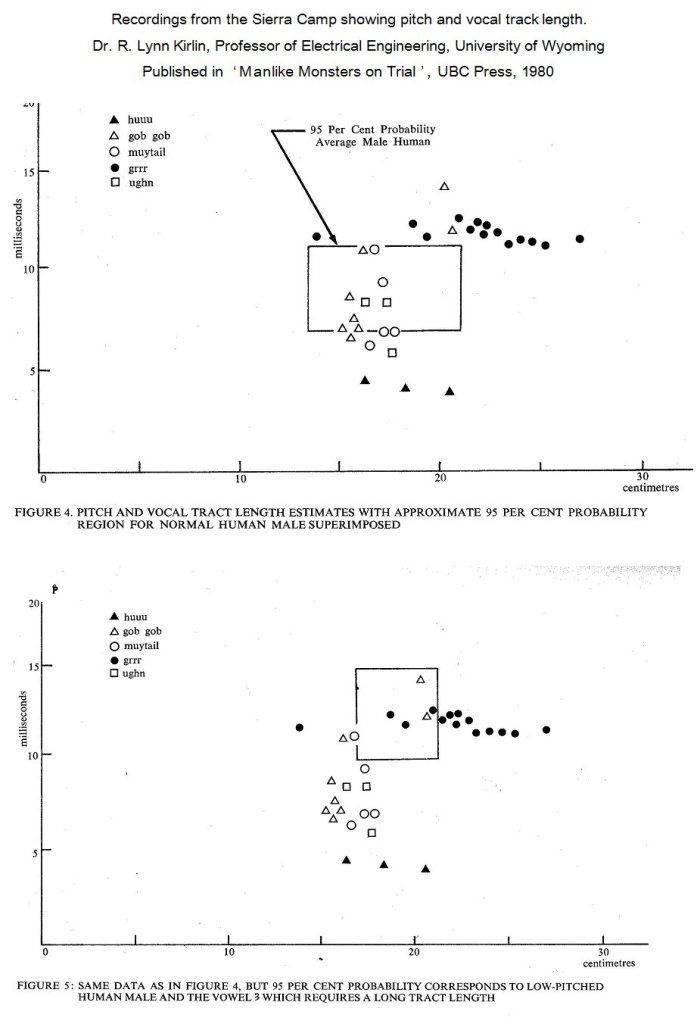About The Science
Wednesday, June 11, 2014Dr. R. Lynn Kirlin, a Professor of Electrical Engineering at the University of Wyoming, after a yearlong study of the recordings, presented his findings in a symposium at the University of British Columbia. It was his opinion that the formant frequencies found were clearly lower than for human data, and their distribution does not indicate that they were a product of human vocalizations and/or tape speed alteration.
Nancy Logan is a human sound expert in the State of California. In her opinion the vocalizations have a pitch range that is considerably more flexible than that of humans. They go much lower and much higher. “The rapid articulation is virtually impossible for a man to do. The vocalizations seem to have some elements of language, i.e. certain repeated phoneme patterns and a certain organization to the chattering… they are trying to communicate.”
Scott Nelson (2008), a Crypto-Linguist, with over 30 years’ experience concludes: “We have verified that these creatures use language, by the human definition of it. The analysis is finished. With the recognition and acceptance that these creatures do indeed speak and understand a complex language, a greater effort will be made to collect voice recordings and our analysis of the language will improve.”

